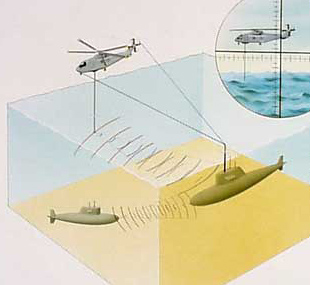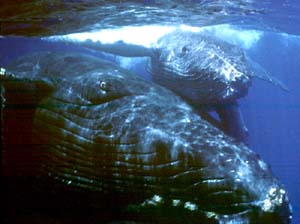Blog
News, updates, finds, stories, and tidbits from staff and community members at KAHEA. Got something to share? Email us at: kahea-alliance@hawaii.rr.com.
counting all the pieces
From Miwa:

Marti, baby, and me–made the trek today to Oahu’s Windward side for B.E.A.C.H‘s clean-up of Laie Beach. This rural beach was littered with all varieties of plastic debris, and about 35 volunteers were there to pick it up and try to count it. Hundreds of bottle caps, plastic nets, and plastic refuse, washed up from all over the world. Years and years of plastic debris.
Plastic takes hundreds (possibly thousands) of years to biodegrade–what it DOES do is break into smaller and smaller pieces over time. In addition to the ancient toothbrushes, lighters, food wrappers, plastic pens, and styrofoam takeout containers, we found a beach littered with a confetti of small plastic bits.
I talked to a man who said he has lived on Laie for over 30 years–he was out on the stretch of beach beside us with a leafblower. A regular task, he says, trying to blow the plastic bits mauka, up off the beach. He talked about how he has seen the plastic problem get worse over the years. I asked him about the future, and he said he envisions his beach eventually “covered in a layer of colorful plastic grains, floating above the heavier sand and collecting a layer of algae slime.”

We finished our clean up a few hours later, and I felt a pang of sadness, looking at the result. More trash will wash in to replace what we cleaned. And even the many pounds we had piled into trash bags, was simply going off to a landfill. We can move it around as much as we want–but the plastic we create today is with us forever.
When we eat our lunch from a styrofoam box, it should make us think a bit: something with a useful life of minutes (okay, maybe a few days) will exist in our world–where we play and swim and hike and live–forever. Our great-great-great-great grandchildren will share the world with our old styrofoam cup. Along with the other 25 billion that we throw away each year.
We can do better. Hawaii is the final destination for a lot of the world’s plastic rubbish, washed up here by Pacific currents. Even in the remote and uninhabited Northwestern Hawaiian Hawaiian islands, plastic trash–marine debris–is a problem.
Happily, a few of our electeds are listening and we have a few opportunities this year to stand up here and show the world it can be done. This is historic, progressive stuff. And if we don’t, who will?
One current proposal to ban styrofoam takeout containers in Hawaii in 2010. To learn more and to support SB2495 and HB2495, go to www.stopstyrofoamhawaii.org. The word from those folks is that SB2495 has a second hearing scheduled for 2/14 and desperately needs to be heard to get out of committee! Send in those letters!
Navy Ordered to Establish Sonar-free Zones
Via Diana LeBetz on Kauai, excepts from a SF Chronicle article:
Wednesday, February 6, 2008
(02-06) 19:27 PST San Francisco — For the second time this week, a federal court found today that a Navy anti-submarine training program threatened to subject whales and other sea creatures to harmful blasts of sonar and ordered protective measures in several sensitive zones, including one near Monterey Bay.
The ruling by U.S. Magistrate Elizabeth Laporte of San Francisco applies to the Navy’s use of low-frequency sonar in submarine detection exercises conducted in large areas of the world’s oceans. She said Navy officials, who had agreed to restrictions after she issued a similar ruling in 2002, failed to take adequate precautions when seeking a five-year renewal of the program last year.
In its plans to shut off the sonar when whales and other vulnerable creatures are spotted, the Navy is relying on visual monitoring, which is unreliable, and on sonar detection, which is limited in range and may miss dolphins and other small animals, Laporte said.
“Marine mammals, many of whom depend on sensitive hearing for essential activities like finding food and mates and avoiding predators, will at a minimum be harassed by the extremely loud and far-traveling (low-frequency) sonar,” the magistrate said.
She said the Navy must establish sonar-free zones around several areas where sensitive marine life is plentiful, including the Davidson Seamount, which adjoins the Monterey Bay National Marine Sanctuary; the Galapagos Islands, 0ffshore from Ecuador; the Great Barrier Reef off Australia; the Pelagos, in the Mediterranean Sea, and a protected area of coral reefs and underwater habitat 115 miles northwest of the Hawaiian islands.
Link to full article by Bob Egelko of the San Francisco Chronicle.
Congressman Urges Federal Investigation of Wespac
The Chair of the Committee on Oversight and Government Reform, U.S. Congressman Henry Waxman, called for an investigation by the GAO (Government Accountability Office) on Monday, in response to calls of concern from Hawaii NGOs regarding improper use of government funds and unethical conduct by Wespac (Western Pacific Fishery Management Council) and its Executive Director, Kitty Simonds.
Hawaii groups have been calling for an investigation for more than four years. Allegations have included altering of data pertaining to the Northwestern Hawaiian Islands, misuse of coral reef conservation money used to promote expanded commercial exploitation in the sensitive, fragile, and strongly protected Northwestern Hawaiian Islands (NWHI), use of Coral Reef Conservation Act funds to promote recreational fishing near Nihoa, an island in the NWHI which is home to important cultural sites, and improper use of federal money for lobbying efforts.
“These are serious allegations, and we look forward to the results of a thorough investigation. Wespac must be held accountable for the way it has been spending public money in its attempts to weaken protections for the Northwestern Hawaiian Islands,” said Vicky Holt-Takamine, Board President of KAHEA: The Hawaiian-Environmental Alliance. “Full protection of our natural and cultural resources demands prosecution of any such violations to the fullest extent of the law.”
Wespac is also under investigation by the Department of Commerce Inspector General (IG).
Federal Judge Rules Navy Sonar Must Comply with Environmental Laws
Woke up yesterday to the news, scrolling across the bottom of the TV screen, that President Bush’s recent action (NEPA exemption) to allow of the Navy to conduct nearshore sonar and anti-submarine warfare exercises is NOT legal and will not stand.
According the decision by a U.S. District Court Judge, the Navy is not exempted from compliance with the National Environmental Policy Act (NEPA) and must honor a court injunction creatng a 12 nautical-mile no-sonar zone off Southern California
From the article in Feb 5 Star Bulletin:
“It’s an excellent decision,” said Joel Reynolds, attorney for the Natural Resources Defense Council, which is spearheading the legal fight. “It reinstates the proper balance between national security and environmental protection.”
In May 2007, Earthjustice, along with KAHEA and several other local and national organizations, sued the Navy for their current Undersea Warfare Exercises (USWEX), which include a dozen high-intensity active sonar training events in the waters around Hawaii.
(photo from hawaiireef.noaa.gov)








